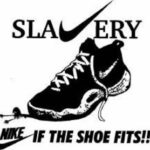While the 2007 Writer’s strike makes headlines, there are many more notable strikes in American labor history. Some strikes ended in bloodshed. Some ended in mass firings. But throughout organized labor history, the price for higher wages and better working conditions has been chronicled by power struggles of epic proportions. Here are some of the most famous labor strikes in history.
Famous Strikes – Some of the Most Famous Labor Strikes in History
This list is by no means a complete list of labor strikes, but rather some of the most notable ones.
The Homestead Strike (1892)
This strike between the Amalgamated Association of Iron and Steel Workers and the Carnegie Steel Company erupted over proactive attempts to break the union. Henry Frick had been placed in charge of the Carnegie Steel Mills and was determined to get rid of the union. When the union asked for wage increases, Frick responded with wage decreases. The union went on strike.
Carnegie Steel hired Pinkerton guards to escort scabs into the mill in Homestead, PA. An armed battle erupted between guards and workers ending in seven guards and 11 strikers killed.
The strike ended in defeat for the union members.
To read a complete account of the Homestead Strike, click HERE.
Pullman Strike (1893 – 1894)
In the late 1800s, the Pullman Palace Car Company manufactured exclusive luxury train cars – the private jets of their era. A recession led to decreased demand for Pullman luxury cars and led to lowered wages. As a result, a strike erupted among Pullman workers and quickly spread to other railroad workers through the American Railway Union, headed by Eugene V. Debs.
The strikers burned and looted railroad cars and seven buildings. With the escalation of violence, 12,000 federal troops, along with United States Marshals were called in to quell the strike. Soldiers killed 13 strikers and wounded an additional 57 before the strike was brought to an unsuccessful conclusion.
Ludlow Massacre (1914)
The southern Colorado Coal Strike was mounted by the United Mine Workers of America (UMWA) over dangerous working conditions and the mining companies’ practices of paying by the amount of material mined rather than the work involved with construction of the mines themselves. This practice led to hastily constructed mines with few precautions taken to ensure the miners safety.
The UMWA secretly organized the workers and called for a strike against the three biggest mining companies operating in Colorado – the Rockefeller-owned Colorado Fuel & Iron Company, the Rocky Mountian Fuel Company and the Victor-American Fuel Company.
When the strike began, strikers and their families were removed from company housing. The union set up tent camps to house the miners and their families. The National Guard was called in to quell strike-related violence. The state, lacking funds to keep the militia in place, recalled the militia as the strike dragged on. Mining companies were allowed to form their own militia out of company guards in National Guard uniforms.
On April 20, the guards began a firefight that ended with the burning of the tent camp and armed conflict that left 32 women and children dead and 13 strikers killed.
Violence escalated to an all out war between strikers and guards, whch finally ended when President Wilson called in Federal troops. The strike ended when the union ran out of funds to support the striking workers. The strikers received none of their demands.
To read more about the Ludlow Massacre, click HERE.
Postal Worker’s Strike (1970)
The first strike in U.S. Post Office history began in New York with a walkout of letter carriers. At its height, 210,000 out of 750,000 postal employees joined the strike, stopping mail service in New York, Philadelphia and Detroit. President Nixon declared a state of emergency and assigned the military to work city post offices.
The strike ended after two weeks, and the postal union received most of the concessions they sought, including the right of collective bargaining.
Air Traffic Controllers Strike (1981)
Federal Air Traffic controllers went on strike over a reduction in their workweek. When Air Traffic Controller’s union rejected the governments contract terms, 13,000 air traffic controllers went on strike. President Reagan issued a back to work order declaring that the strike was illegal. Most of the strikers refused to return to work. Reagan had the striking workers fired.
Some Other Notable Labor Strikes
UPS Workers Strike (1997)
This strike involved 185,000 workers and cost UPS an estimated $650 million.
Screen Actors Guild Strike (2000)
This was the longest strike in entertainment industry history at the time.
New York City Transit Worker’s Strike (2005)
This strike was over raises and health insurance and cost the city an estimated 1 Billion dollars.
Writer’s Guild Strike (1988)
Longest writers strike in history (so far), surpassing the 1960 Writer’s Guild strike by a single day. Because of delays in television production, the strike lowered the number of people who watched television – an effect that continues until the present.
The disagreement was over reduced residual payments for hour-long television shows and reruns in foreign countries.
For more strike related information click HERE.


